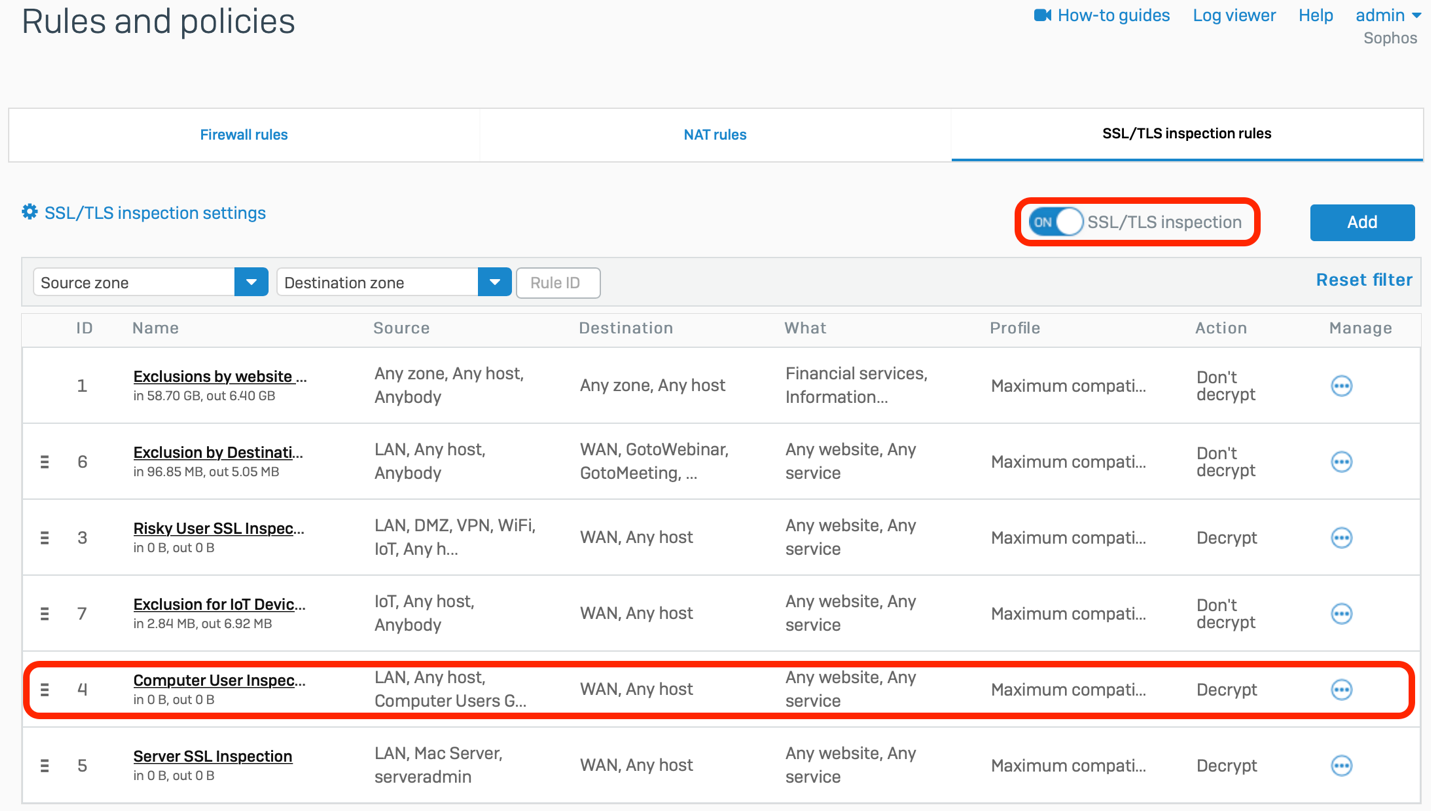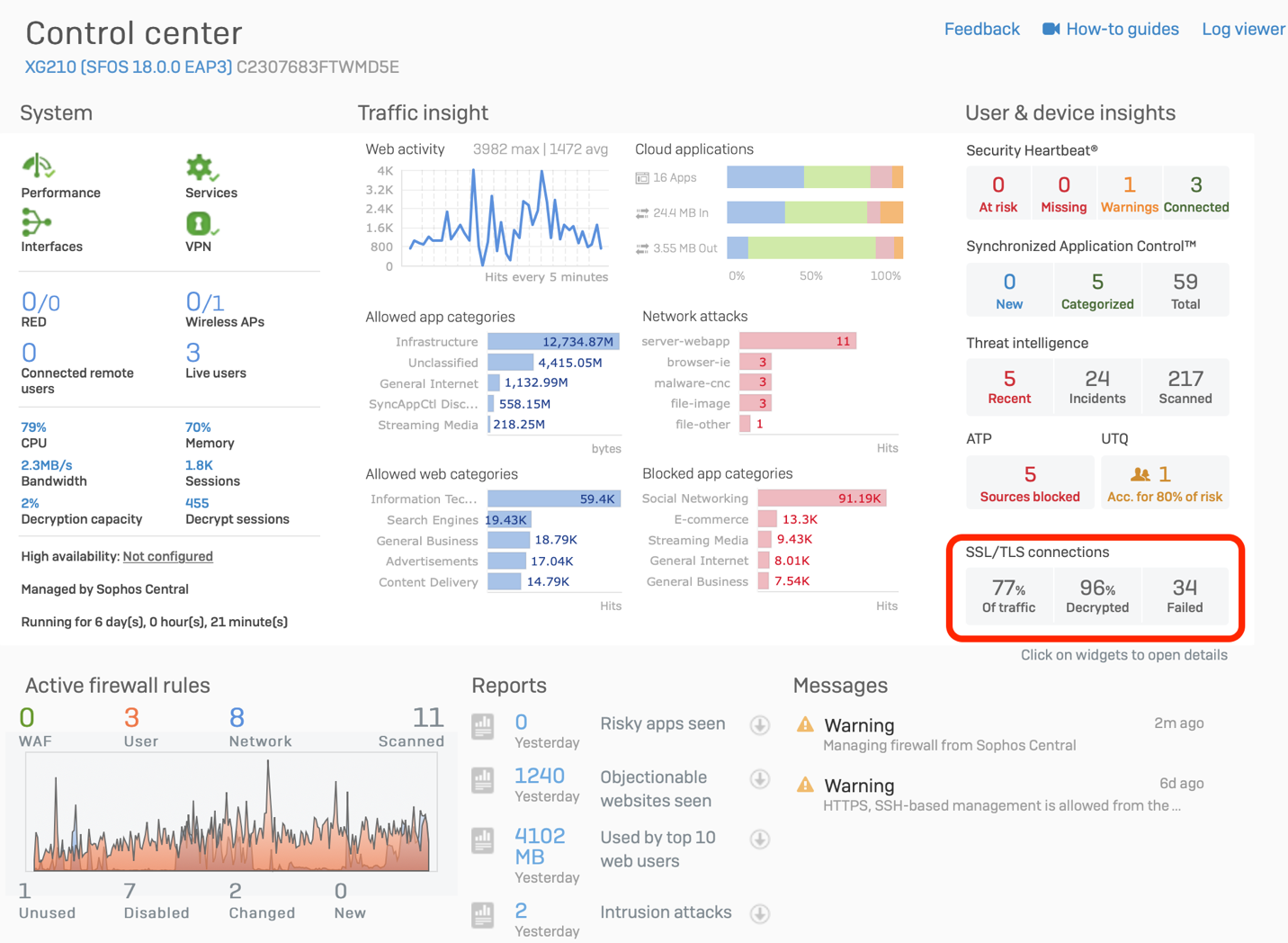XG Firewall v18 MR1 is now rolling out globally, bringing new levels of visibility, protection and performance to your customers. When the notification for the latest firmware update appears in the console, we strongly encourage everyone to take advantage of the easy process to upgrade with just a few clicks. If you haven’t already done so, now is the time to upgrade your customer’s XG Firewalls to v18.
As there are many great new features in XG Firewall v18, our blog series over the coming weeks will be highlighting the most important new capabilities such as the new Xstream Architecture, the new zero-day threat protection, Sophos Central Management and Reporting, and how you and your customers can get the most out of them.
Xstream Architecture
One of the flagship features in v18 is the new Xstream Architecture which includes a streaming DPI engine and TLS 1.3 inspection for encrypted traffic.

How is this architecturally different to the legacy web proxy solution? Put simply, the new Xstream DPI engine is specifically designed to achieve optimal performance and connection handling efficiency. It uses a single streaming engine that inspects traffic between a host on the network and an external server or service. This provides all the essential protection in a single pass:
- File and web malware scanning
- Intrusion Prevention (IPS) or attempts to exploit network vulnerabilities
- Application identification and control
By stream scanning files as they are downloaded from web servers, it can pass the content along to the end user while only holding the last portion of the file to complete the scan before either blocking the download or allowing the last packets to flow through. It does not need to hold the entire file while it’s being scanned.
And it’s FAST! How Fast? Many XG Firewall customers and partners have reported that the new DPI engine and TLS inspection are anywhere from two to three times faster than before.

Unlike the Xstream DPI engine, legacy protection in XG Firewall utilizes different engines for different jobs. There is a web proxy for inspecting and filtering web content, an IPS engine, and an application control solution. Rather than stream scanning as traffic flows through, the web proxy acts as a relay between the client and the external server. This has an advantage when packet header modifications need to be made to support features such as SafeSearch, YouTube restrictions, or Google domain restrictions as only the legacy web proxy can support these features, but in all other cases, it just means it’s handling more connections and doing more work.
Making the Most of the new Xstream DPI Engine and TLS Inspection
When upgrading XG Firewall to v18, all existing firewall rules will be using the legacy web proxy by default, to ensure seamless upgrade compatibility. If features like SafeSearch, YouTube restrictions or Google domain restrictions, are not required the firewall rules should be switched to using the new Xstream DPI engine. It requires a change to a single setting:

This setting determines if the firewall is using the legacy web proxy (checked) or the new Xstream DPI engine (unchecked).
By switching many firewall rules over to the new Xstream DPI Engine, you can see a tremendous performance benefit.
Taking advantage of the new TLS inspection engine with support for TLS 1.3 is also simple to configure – it essentially requires checking one box in your firewall to activate it and then creating a rule on the new SSL/TLS Inspection Rules tab as shown below.

As with any TLS inspection solution, the appliance CA certificate will need to be deployed to hosts on the network to support the firewall inspection. We recommend using the wizard built into the Microsoft Active Directory Group Policy Management tools to make this quick and easy.
TLS rules define what TLS traffic to decrypt and the associated decryption profile governs how to handle the decryption as well as protocol and cipher enforcement. The rules are structured and work identically to how firewall rules function in a top-down hierarchy.
We recommend starting gradually with TLS encryption, with a limited network sub-estate or a few test systems. This will allow you to build expertise with the new TLS inspection solution and explore the new rules, logging, reporting, and error handling options. Not all applications and servers fully and properly support TLS inspection so watch the Control Center for errors and take advantage of the convenient built-in tools to exclude problematic sites or services.

Once comfortable with the DPI engine and TLS inspection, we recommend applying it more broadly across your customer networks. However, with encrypted traffic volumes now at over 80% of all internet traffic, keep in mind that TLS Inspection is resource intensive due to the nature of the decryption/encryption algorithms. If a customer’s XG Firewall appliance is a few years old and already running at high load, it may be time for a hardware refresh or a new higher-performance model. Enabling TLS inspection on most internet traffic is now essential protection against the latest ransomware and threats as more and more hackers make use of TLS encryption to get onto networks and stay there undetected.
To learn more, the following resources are available to help make the most of the new features in XG Firewall v18:
- XG Firewall Getting Started Guide
- Full Online XG Firewall Documentation
- How-To Videos on What’s New in v18
- In depth differences between legacy proxy and Xstream DPI protection
- A full list of recommended community articles on v18
Selling XG Firewall
On the Sophos partner portal, we provide you with a wealth of sales assets. You may filter the list of assets by selecting a category to narrow down the results. And don’t forget to check whether there is a sales promotion available for your region. It’s worth checking back from time to time to make sure you’re not missing out on a great opportunity!